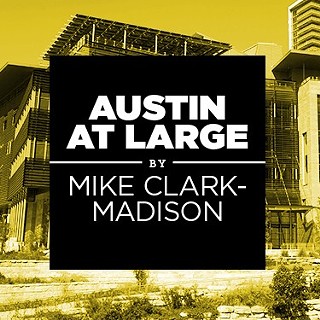Austin at Large: Your House Is Our House
Reconnecting to a vision of an Austin where everyone can live, despite our failures
By Mike Clark-Madison, Fri., Sept. 24, 2021
One of my oldest and dearest family friends, decades after moving to Austin, is now finally taking an interest in city politics in her golden years – to attempt to derail an affordable apartment complex proposed for her environs. I got to hear all about it over the weekend, and told her that yes, everyone can go NIMBY if they have to. I have blocked upzonings in my neighborhood before; it's not a crime to do so. But I also wanted her to understand that while this set of circumstances is novel to her, every objection she raised about this project has been raised innumerable times over the decades, and every member of Council and the city's land use commissions has heard every last one. Even the quite sympathetic CM who represents her – a name unfamiliar to my friend previously – will likely seek to find a stopping place on this particular project that is somewhere short of hell-to-the-No.
Yet it's hard to fault people for caring about what happens around them. As she related the facts of the case to me, it seemed clear that many of her neighbors do not care that much – the folks who'd sign a valid petition if this were happening in Zilker or Bryker Woods, but who in the city's suburban periphery just don't have that much of a perceived stake in the outcome. They're part of the thousands who move to Austin every year into places like this neighborhood, mostly seeking and in past years usually finding accessible housing that they expect the city would want to see created precisely for this purpose. As we've framed it in this space, we must commit to provide decent housing for all 1 million Austinites or so (and another 1 million or so in the metro area) where it's needed. That could involve building new income-restricted housing like this project, or preserving existing mid-market housing like where my friend lives, or making decisions about mobility and school sites and employment centers and urban placemaking that change where and what kind of housing is needed. In most of the highly active sub-sub-markets and micro-neighborhoods that make up America's fastest-growing large metro area, the moral imperative of housing each other will involve all of these things at once.
Situational Awareness
It would be great if we could see all of these things at once. We could have followed through with commitments in the past, or could credibly make new ones for the future, to engage in holistic and detailed community planning that could address many of the concerns my friend now has. Those same concerns colored the years of choices and fears that have scarred and maimed Austin's land use code and development process and left the city ill-equipped to respond to waves of growth and change that we all should by now realize may never cease. The places that are the least susceptible to such changes are the ones whose residents have the greatest means and the most time to keep the changes from happening, which is not unique to Austin. But keeping aging white homeowners in Central Austin comfortable under NIMBY snow globes is one thing; extending those same policy choices to vacant properties on major arterials near the city limits is quite another.
To wit, this week saw the release of the latest HousingWorks Austin scorecard of the city's progress at meeting the goals laid out in its Strategic Housing Blueprint, adopted in 2017 to guide public and private efforts to add 135,000 housing units, more or less evenly divided between income-restricted and market-rate sale and rental units (there are detailed subgoals at different income levels) and distributed across all 10 Council districts. These specific numbers and typologies were cited to inform the star-crossed efforts to reform the broken code and process. Now that those have ceased until, to be honest, a new mayor and at least three new Council members take office in early 2023, it's worth asking how much fealty we need to have to the Blueprint's mechanics, even as we can continue to endorse having more housing for more people in more places than at present. HousingWorks Austin itself, a nonprofit consortium of affordable housing producers and policymakers, acknowledges the difficulty in keeping up with the firehose of data available in the nation's hottest and, according to some, most overvalued real estate market in a way that makes the annual scorecard useful or its district-to-district and type-to-type comparisons relevant.
The News Ain't Great, Folks
Officially, the scorecard says, the city "had mixed results in 2020 in meeting [its] Blueprint goals." This is grading on a curve to an excessive degree; the city is not on pace to meet its 10-year targets in any district and at almost any price level. The sole exceptions are at the "workforce housing" level available to Austinites at between 81-120% of median family income, and at locating new housing in the centers and corridors of the Imagine Austin Comprehensive Plan's growth concept map, which is more than a decade old and is a lagging indicator at best of current market conditions. In the years since Imagine Austin was adopted, almost no progress has been made on making its vision of a "compact and connected" city a reality through policy and regulation, and even historic investments in housing and mobility have run up against people like my friend, who can be good neighbors and good Austinites if given opportunities to do so that have eluded too many for too long.
Got something to say? The Chronicle welcomes opinion pieces on any topic from the community. Submit yours now at austinchronicle.com/opinion.







